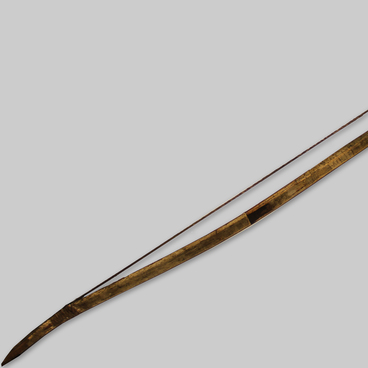Alel — in ket mythology, the spirit is the patron of the house, family, hearth, as well as a human assistant in the fight against troubles, diseases, and evil spirits. Most often it was found in the homes of kets and Selkups who lived at the Northern side of the Krasnoyarsk region. Alel was represented as a tiny old woman and considered an obligatory companion — usually there were one or two such dolls in the family, sometimes more. It protected life and prosperity, helped around the house, looked after children and livestock, such as deer and dogs.
The doll was also used for divination. They took it by the head with two fingers, swung it and tossed it so that it turned over several times in the air. If Alel fell face up, the answer was considered favorable. Only the owner of the plague or the eldest woman in the family could guess.
The Kets believed that Alel felt everything, just like people — it knew such feelings as pity, resentment, and joy. And so people had to take care of Alel too. Kets fed it, smearing the doll’s mouth with fish oil and deer blood. Humanoid Alel with a large head, arms and legs were made of wood, eyes — from beads or buttons, elegant clothes — from cloth and fur. The height of such dolls varied from 15 to 30 cm. In some genera, Alel was wrapped in a new rag every year. Once in 20 years, it was changed “worn out” clothes, gave it new bundles of beads, coins, beads.
Kets believed that if a person does not take care of Alel, the family would be left without constant uncomplaining helpers and would perish. The doll was kept in a special birch bark box or tuesok in a secluded place of the plague or at home, facing East, covered with a handkerchief on top. When migrating, they take it with them in sledges-boxes with household goods. The person who got his own separate plague, at the same time, made himself a similar amulet. The same rule was applied to the newlyweds.
In 1999, the A.I. Kytmanov Yeniseysk Museum of Local History. I. Kytmanova purchased one of these guardian dolls. Alel, made of cedar, is dressed in a squirrel coat and tied with a hunting belt. On the neck there is a decoration of beads.
The doll was also used for divination. They took it by the head with two fingers, swung it and tossed it so that it turned over several times in the air. If Alel fell face up, the answer was considered favorable. Only the owner of the plague or the eldest woman in the family could guess.
The Kets believed that Alel felt everything, just like people — it knew such feelings as pity, resentment, and joy. And so people had to take care of Alel too. Kets fed it, smearing the doll’s mouth with fish oil and deer blood. Humanoid Alel with a large head, arms and legs were made of wood, eyes — from beads or buttons, elegant clothes — from cloth and fur. The height of such dolls varied from 15 to 30 cm. In some genera, Alel was wrapped in a new rag every year. Once in 20 years, it was changed “worn out” clothes, gave it new bundles of beads, coins, beads.
Kets believed that if a person does not take care of Alel, the family would be left without constant uncomplaining helpers and would perish. The doll was kept in a special birch bark box or tuesok in a secluded place of the plague or at home, facing East, covered with a handkerchief on top. When migrating, they take it with them in sledges-boxes with household goods. The person who got his own separate plague, at the same time, made himself a similar amulet. The same rule was applied to the newlyweds.
In 1999, the A.I. Kytmanov Yeniseysk Museum of Local History. I. Kytmanova purchased one of these guardian dolls. Alel, made of cedar, is dressed in a squirrel coat and tied with a hunting belt. On the neck there is a decoration of beads.



